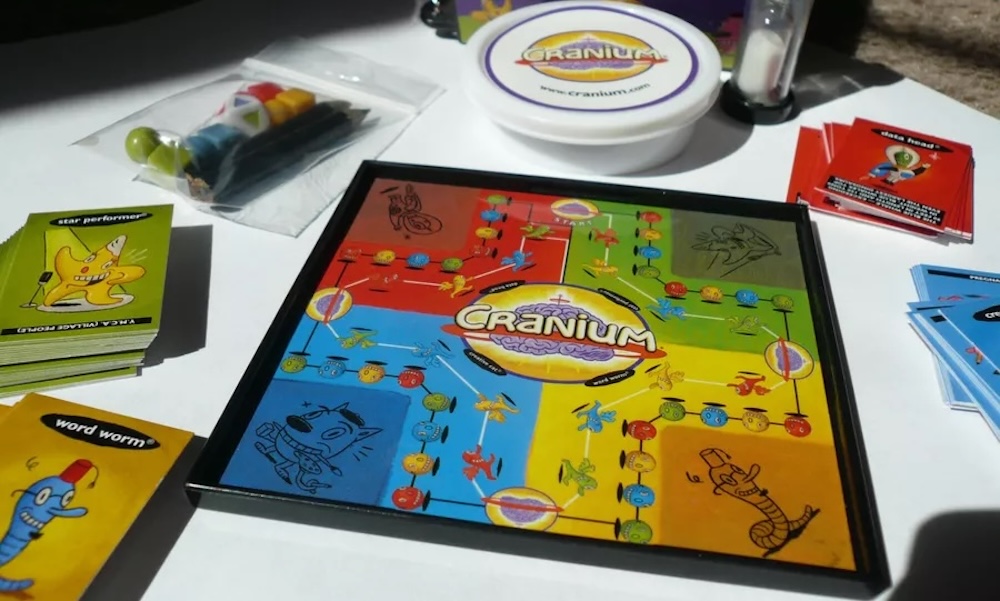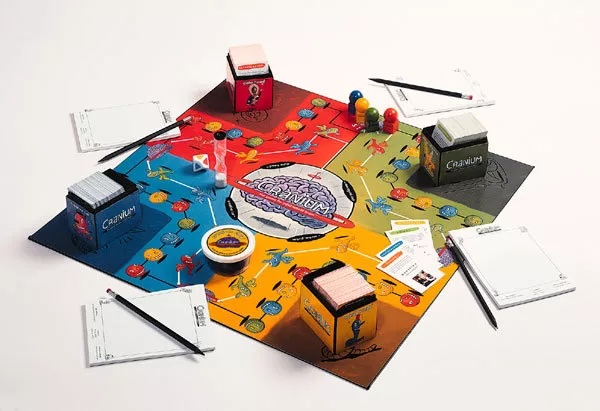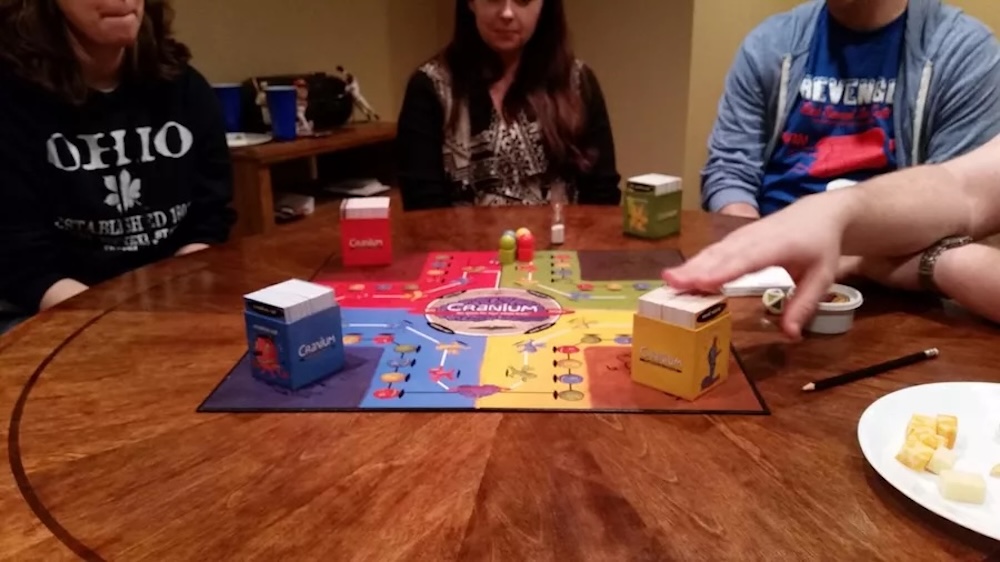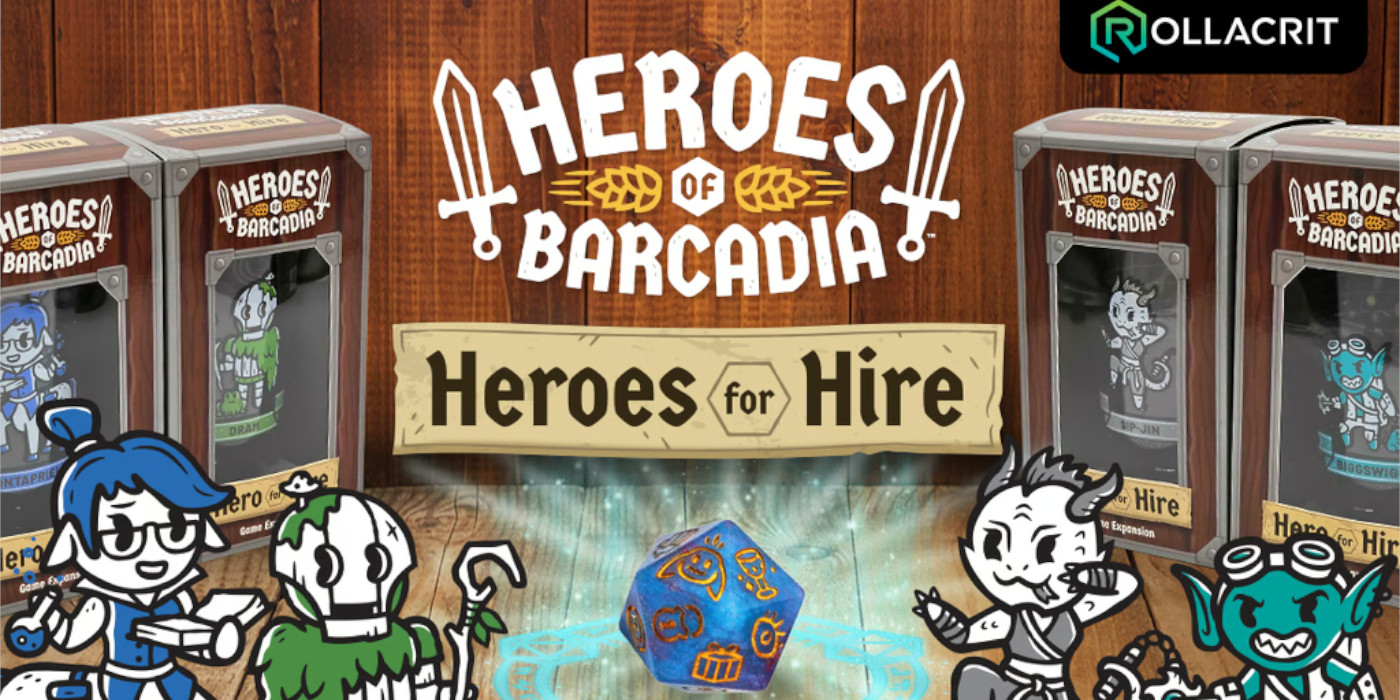‘Cranium’: A Fun Exercise for Every Kind of Brain
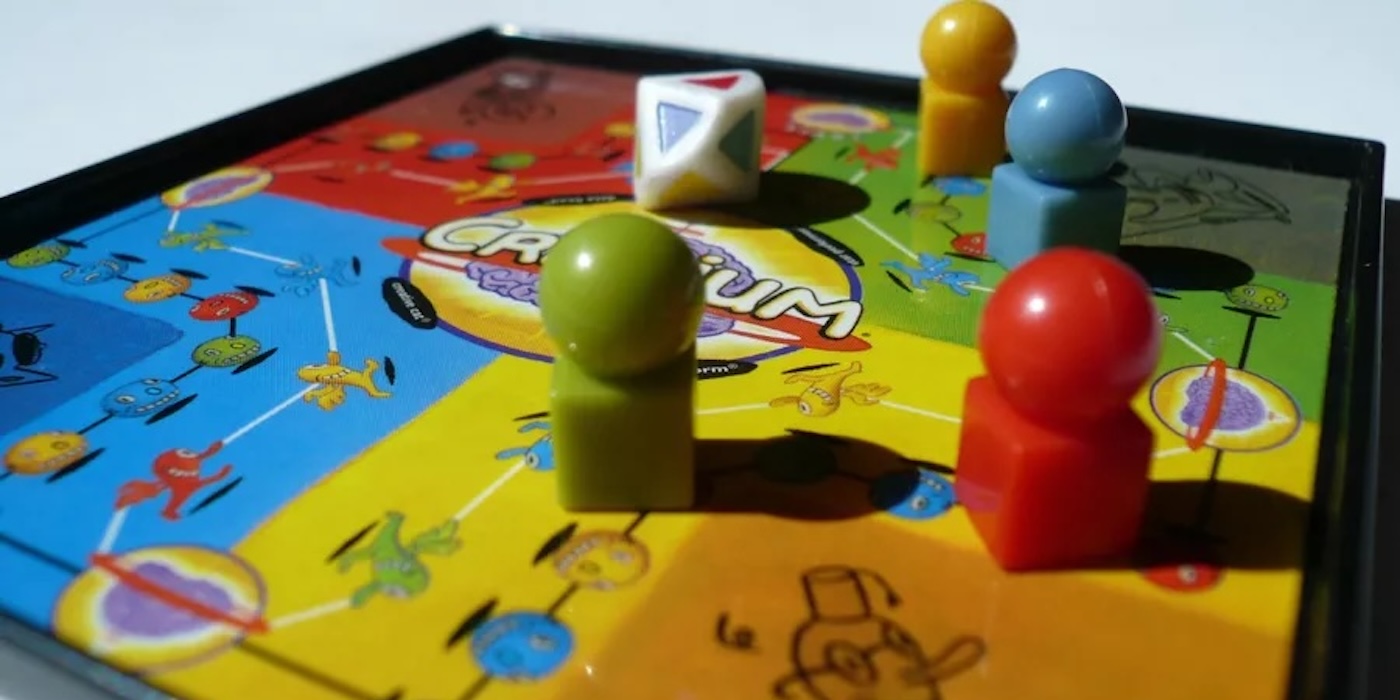
Whatever your talents, there’s almost a guarantee that you and your friends or family will have a good time playing Cranium.
If you’re looking for a game that will please a wide array of personalities, look no further than Cranium. The game was created ideally for this situation! Are you not so good at drawing but do you love trivia? There’s a category for you. Or are you a regular Michaelangelo with Play-do? Guess what, you can play win Cranium, too. It really is the game for every talent.
Jump to…
The History of Cranium
This popular board game hit shelves in 1998 when a couple of designers wanted to create a game that would suit a diverse table of players. At the time, the concept of a game with multiple mental objectives was a new thing. Game creators Richard Tait and Whit Alexander chose fun categories based on the Hermann Brain Dominance Instrument (HBDI) theories of thinking styles. The HBDI highlights analytical, sequential, interpersonal, and imaginative thinking styles as the primary modes of thinking.
We’re not qualified to comment on the validity of this pyschological mode of thinking, but we can say it makes a damn good board game.
To represent each mode of thinking, the game features four signature characters designed by Gary Baseman. Word Worm, Creative Cat, Data Head, and Star Performer are their own doodle-rific characters that you can choose when it comes your turn to perform a task.
The idea of the game was to create an experience where everyone could enjoy themselves. And during testing, it was so popular that one of the test subjects tried to steal the game.
Cranium Inc. didn’t have any official distribution, so the company had a limited number of games printed overseas. Thanks to a powerful investment deal with Starbucks and a creative deal with digital storefront Amazon, Cranium was available for purchase. At this time, board games hadn’t thought to sell their products in either place, so the company’s approach to retailing was pretty groundbreaking.
Most board games were directly marketed to kids and families. As such, they were primarily sold in toy stores. Cranium was a game made for young to middle-aged adults, so the game needed to retail in locations where those consumers would be. The game blazed a trail for adult board games like Cards Against Humanity to find big-time success.
How Do You Play the Game?
Cranium is your basic “move your way around the board” game, and each spot will give you instructions. It’s also a team game, and if your team performs the chosen task, they get to roll dice and move forward. Each color corresponds with a particular type of task.
The purple spaces are Planet Cranium spots, and they’re a stop point regardless of your color roll. When your team lands on a purple spot, you have to complete a task in the category of your choosing. If you get it right, you get to take the fast track, which will move you across the board faster.
Players will also need to keep their eyes out for the Club Cranium cards. When a card has this symbol at the bottom, everybody has to participate. The team that completes the task first gets the bonus move.
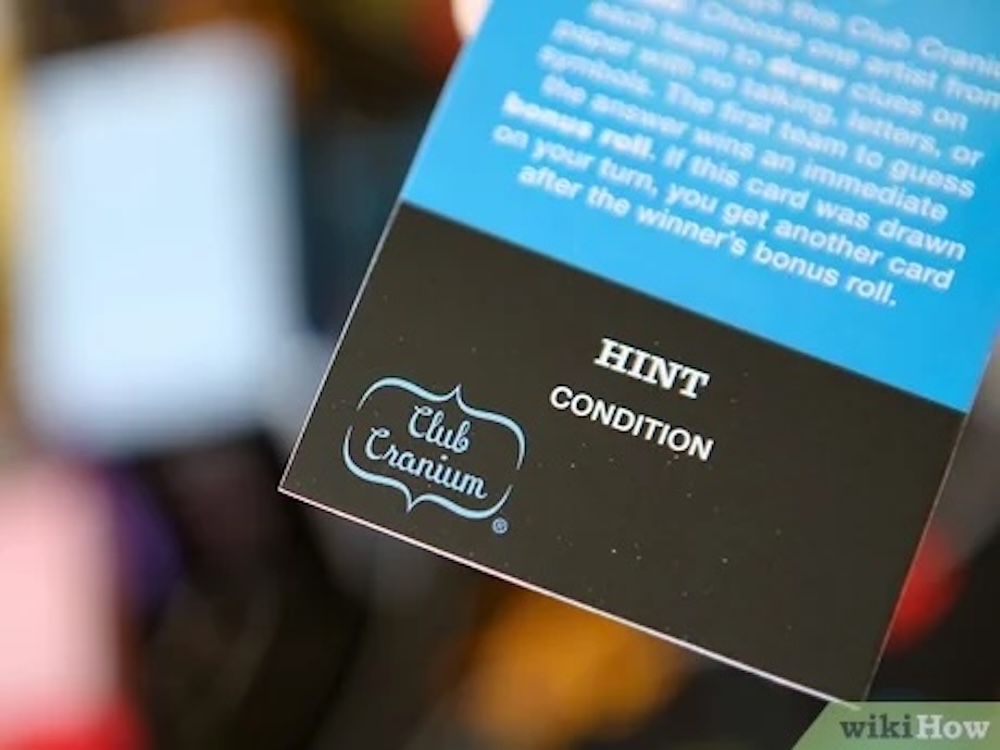
At the center of the board, there’s Cranium Central. The team has to accomplish a task from each card category to be allowed into the final spot. To win the game, the opposing team will choose a card from a color category of their choosing—which means if your team is bad at performance, that’s what your opposing team should (and will) choose.
This goes on until your team completes the Very Hard Task of Your Enemy’s Choosing. Once you do this, you win!
Four Cranium Categories
Data Head (red) is for the trivia buffs. True or false and multiple-choice questions are commonplace in this little space-traveling alien’s domain. If you’re the friend that kills it at bar trivia nights, lean toward the red cards when you’re playing Cranium.
Star Performer (green) is the category for the drama queens. Performance tasks include whistling a tune, acting, or charades to communicate a secret word to your team. This category is for the Meryl Streep in your crew.
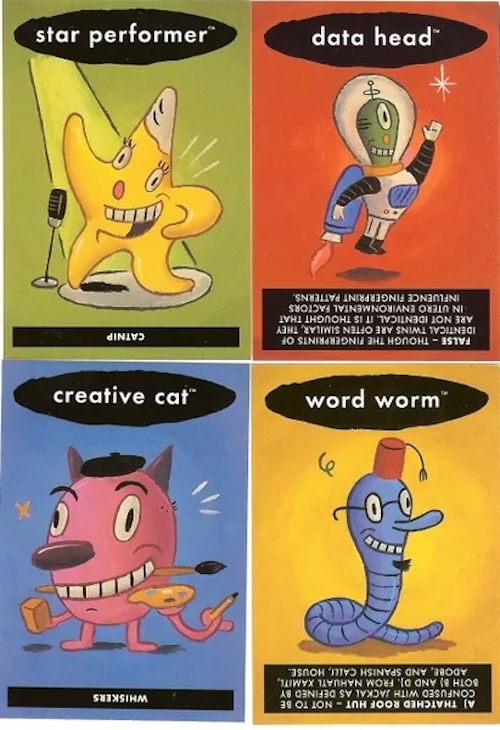
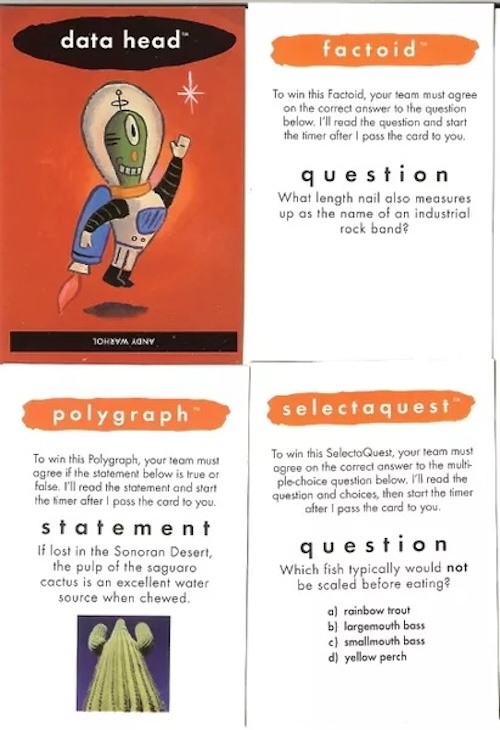
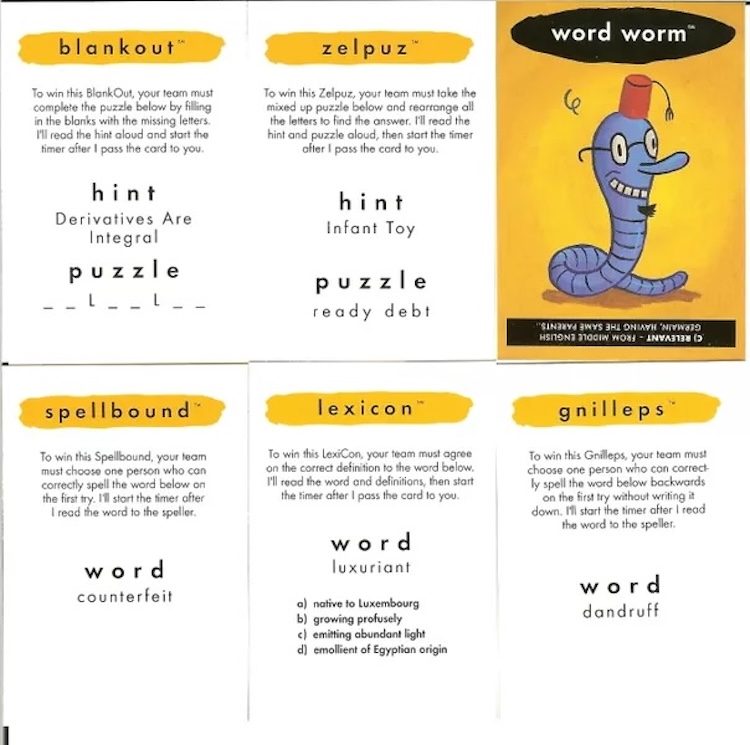
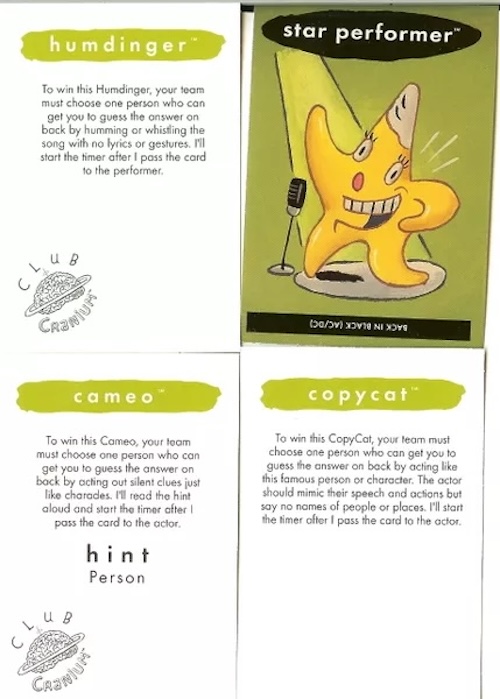
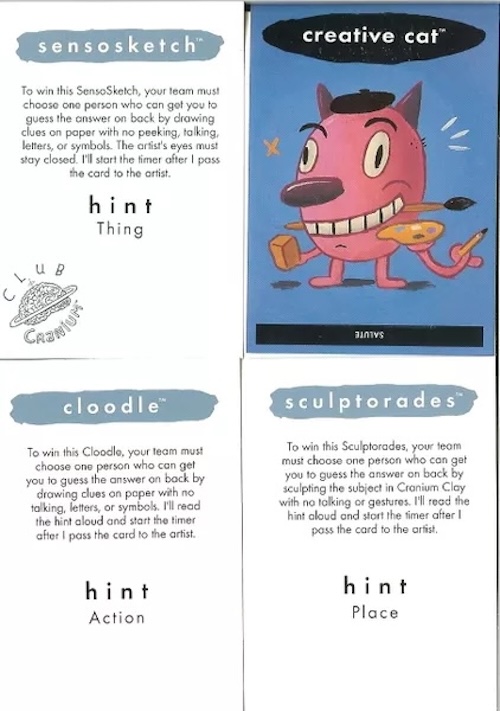
Creative Cat (blue) is for the sculptor or doodler in the gang. If you draw an excellent stick figure or have been known to carve a bust out of your holiday mashed potatoes, you’re a creative cat.
Word Worm (yellow) is the card for the cunning linguist in your crew. Anagrams, word problems, and spelling challenges abound in this category. If you’re the master of the crossword, consider yourself your team’s Word Worm supreme.
What to Expect When Playing Cranium
Anyone over the age of 16 can play Cranium. It’s a great game for families with teenagers or at adult family gatherings. It’s an excellent game to bust out at a bar or play during a board game night with friends. It pairs well with many a fine beer, wine, or cocktail.
Because it’s a team game, Cranium only works with a minimum of 4 players. But that also means you can play with up to 16 people—maybe more, what am I, your Dad? I’m not the boss of you!
The game takes about an hour to play through, and fast tracks mean it could be shorter.
There are multiple editions and spin-offs of Cranium. There are tons of booster packs for when you’ve run through and memorized all the card options. You can also find replacement clay because you accidentally left it out overnight and it got dry and crusty.
Cranium Cadoo is the spin-off version for kids. It has a setup more like tic-tac-toe and task cards that are easier for the little ones. Hullabaloo is also for children but it also incorporates dancing. Scribblish adapts the game by adding an element like the game of telephone.
There’s even a SpongeBob edition.
Happy gaming, folks!

